Portfolio¶
Living BioLibrary: Student-Driven Initiatives in Biomaterials, Biochromes, and Bioelectronics¶
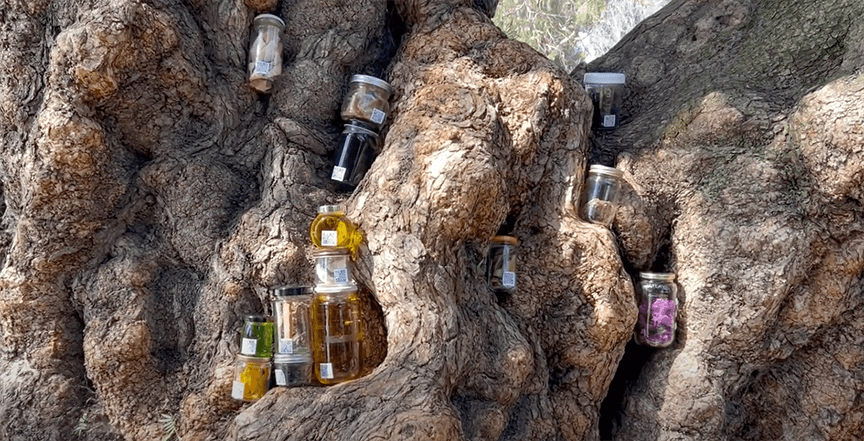
Purpose¶
The Living BioLibrary is a sustainable and dynamic student-led collection of physical materials and digital resources. The aim of the project is to foster a cycle of student-driven innovation and research by curating and showcasing samples of student work.
Video Overview of Living BioLibrary¶
Abstract¶
The Living BioLibrary is integrated within my Advanced Biology and Biotechnology course curriculum. In this course, students embark on a Bioart project where they design, develop, and create a piece of bioart that they showcase in a culminating open house event. Students are given the freedom to choose from different paths, including biofabricating materials, exploring natural dyes, or building organism-interfacing electronic devices. Students are encouraged to innovate designs and develop new methodologies. All of these student-driven experiments contribute to the growth of the Living BioLibrary. Students add their research, trial and errors, and procedures to the digital collection. Additionally, students provide material samples of their innovations into the physical library, ensuring ongoing student involvement drives the library's growth over time.
Bioart Project Overview¶
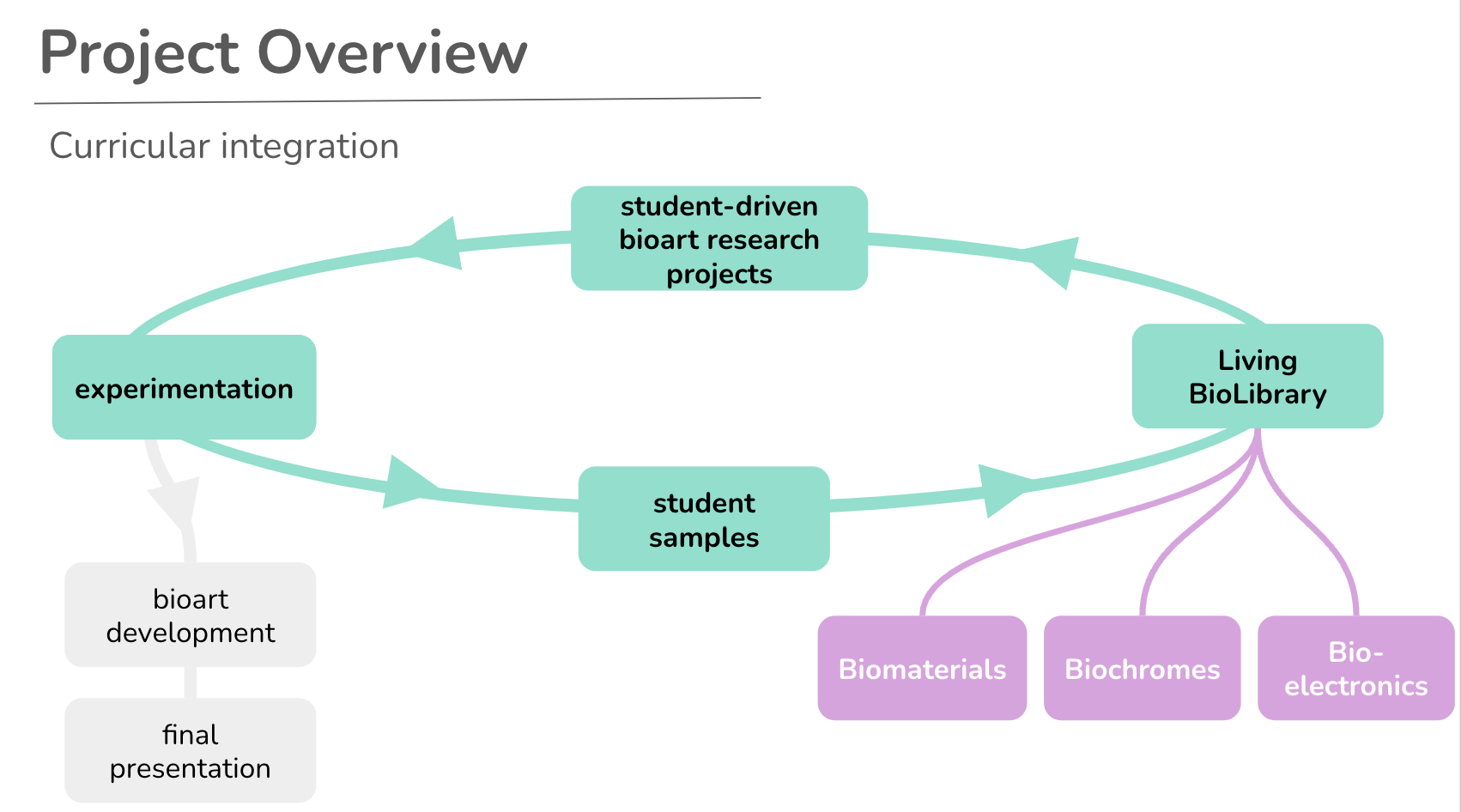
For the Honors program in my Advanced Biology and Biotechnology class, I developed an innovative bioart project that utilizes biotechnology and digital fabrication, and fosters interdisciplinary connections for 11th and 12th grade students. This Honors Bioart Project spans three-months in which students design, develop, and create a piece of bioart that they showcase at Science Night—an open house event for the community. The driving question for this project is:
How might bioart inform sustainable practices?
First, students choose a topic of interest from several different paths. For instance, this year, students could choose among two paths: biomaterials and biochromes. Within each path, I offer examples of specific bioart projects for students to consider. Those with ambitious ideas are also encouraged to innovate their own designs. Furthermore, students have the flexibility to work either independently or in a group. This freedom enables them to select a project aligned with their interests and work in a style that suits them best.
The Honors Bioart Project guides students through the scientific process including a lab report-style write-up. The project is broken down into a structured timeline with mini-deadlines. This ensures that students spread out the workload and also allows for multiple rounds of iteration.
Bioart Project Sheet
Below I have summarized the expectations for each mini-deadline to provide insight into the extensive exploratory journey the students undertake.
-
Mini-deadline #1, Background: Students start researching their topic of interest and begin to collect resources for their references section. Students write an introduction to their topic including background information of what previous studies have done, gaps in the field, and how they might address those gaps in their project. Students also begin the ideation process, developing sketches or models of their final product.
-
Mini-deadline #2, Planning: Students practice backwards planning and project management skills. They develop a detailed timeline, compile a list of materials, and write down all necessary procedures.
-
Mini-deadline #3, Process: Students have a month of dedicated in-class work time to physically experiment with materials, utilize digital fabrication tools like laser cutters and 3D printers, and work towards creating their final bioart product. They also contribute to the class materials library by creating a swatch of the material or dye used.
-
Mini-deadline #4, Outcome: Process is emphasized over product here. Students finalize their documentation. Students reflect on the process through discussion on their creative process, challenges faced, and how their bioart project fits into the driving question.
-
Science Night: At Science Night, students present their projects to the community.
Living BioLibrary: Taxonomy¶
Biochromes¶

Examples of student projects:
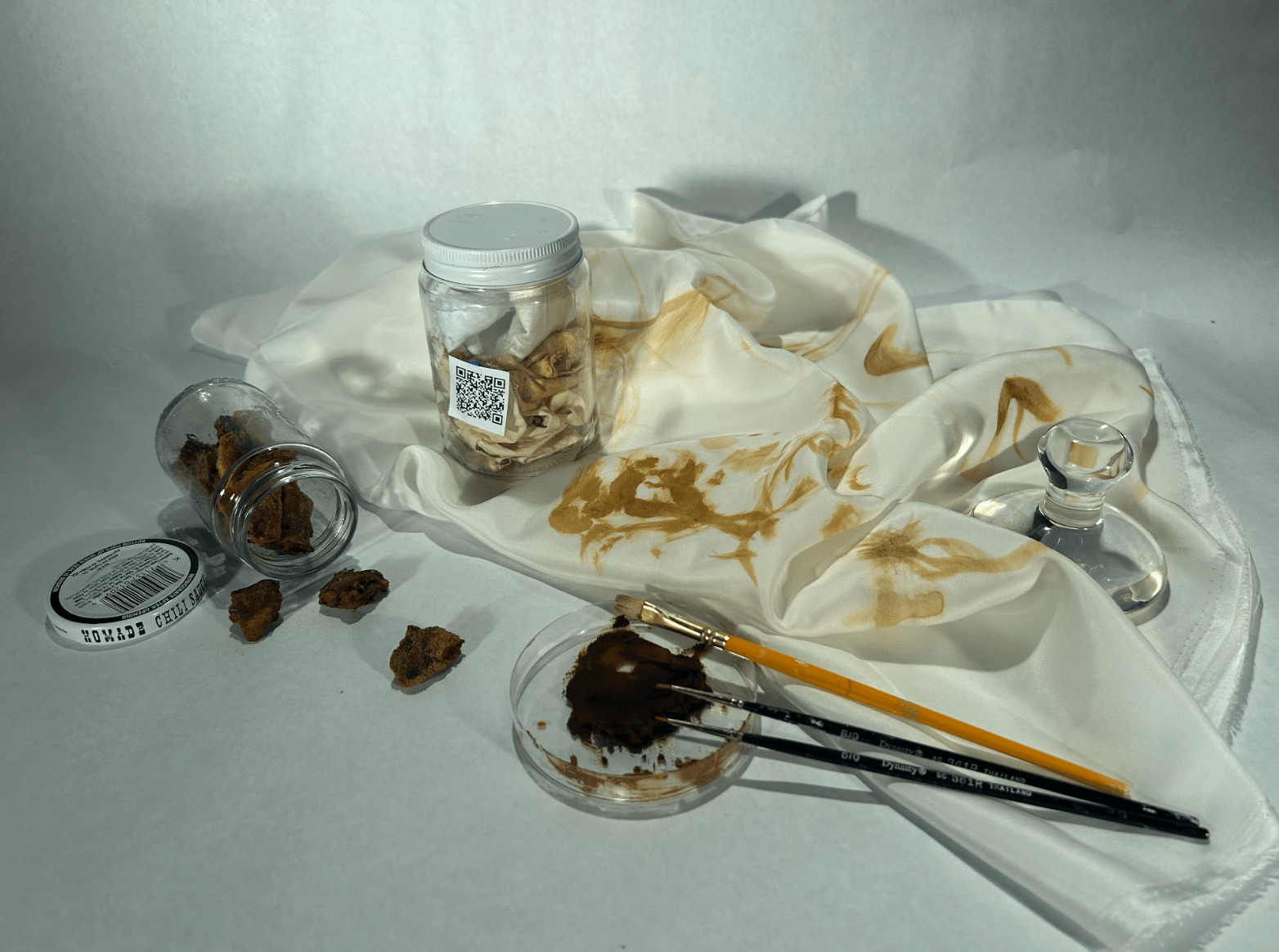 Mushroom Dyed Shoes by Diego W. ('24) and Jack B. ('24)
Mushroom Dyed Shoes by Diego W. ('24) and Jack B. ('24)
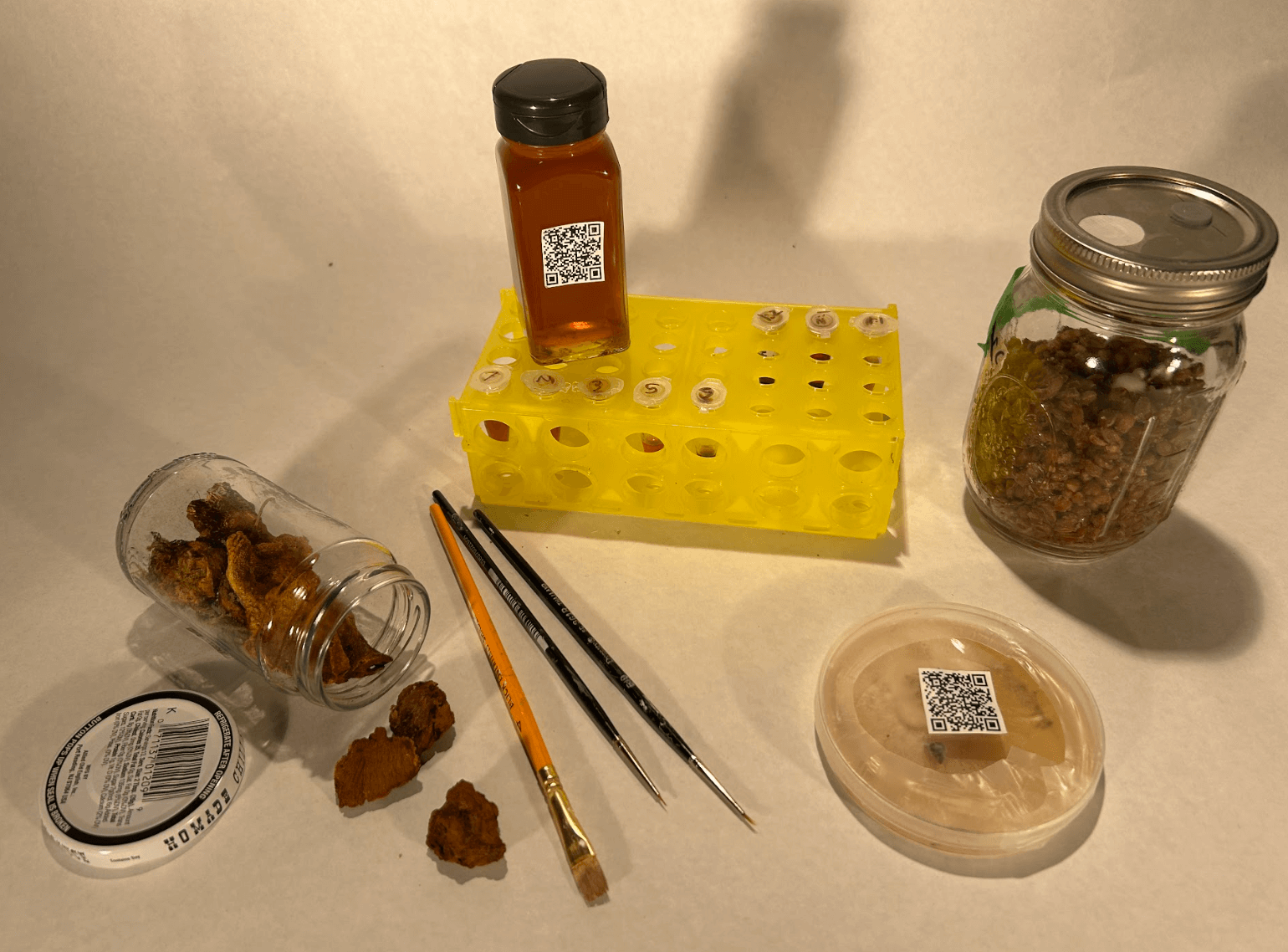 Fluorescent Mushroom Ink by Amit C. ('24) and technician Jackson W.L. ('24)
Fluorescent Mushroom Ink by Amit C. ('24) and technician Jackson W.L. ('24)
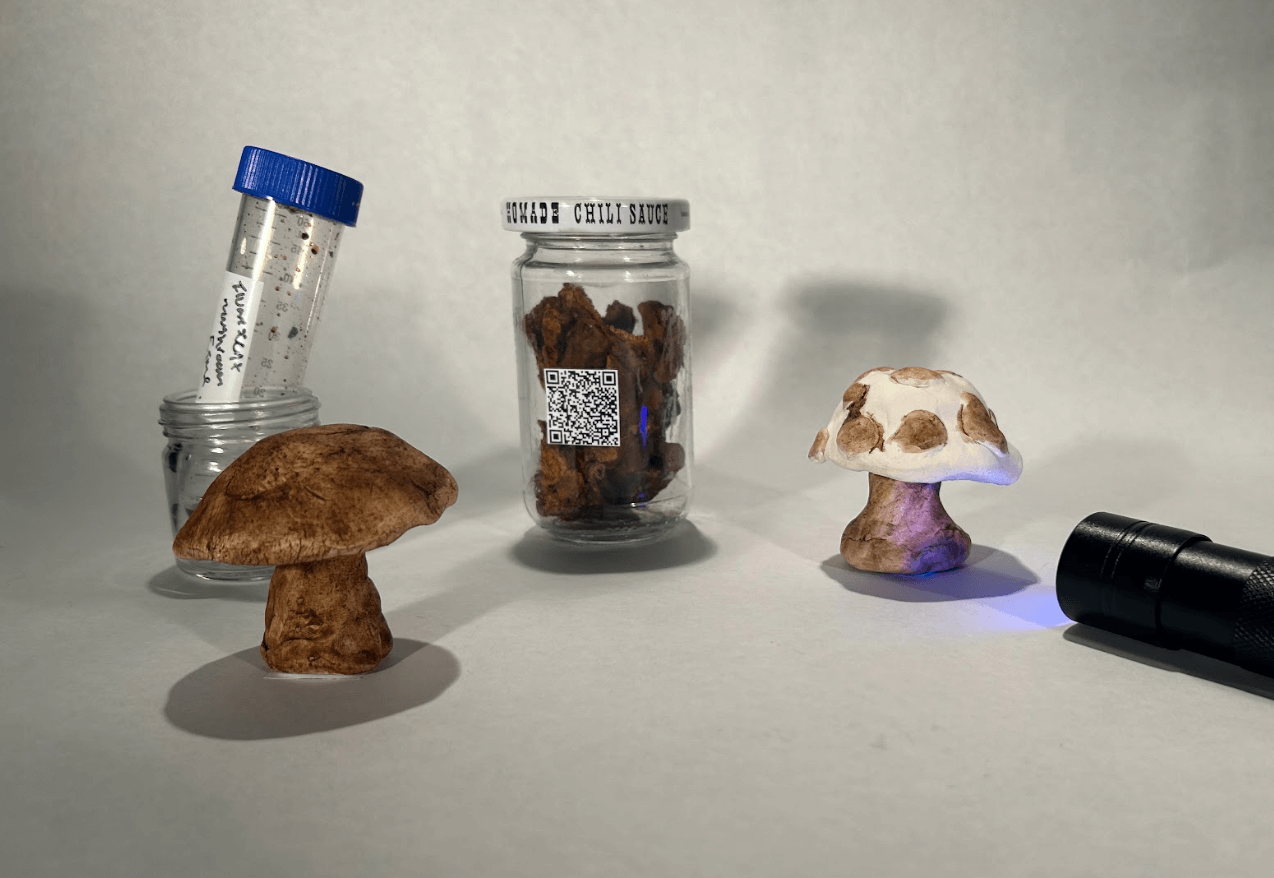 Fungal Pigments and Ceramics by Esmé W. ('24) and technician Ella K. ('24)
Fungal Pigments and Ceramics by Esmé W. ('24) and technician Ella K. ('24)
 Mushroom-Dyed Yarn Creations! by Hana W. ('24) and Stella G. ('24)
Mushroom-Dyed Yarn Creations! by Hana W. ('24) and Stella G. ('24)
 Colorimetric Biosensors by Giulia P. ('24) and technician Libby S. ('25)
Colorimetric Biosensors by Giulia P. ('24) and technician Libby S. ('25)
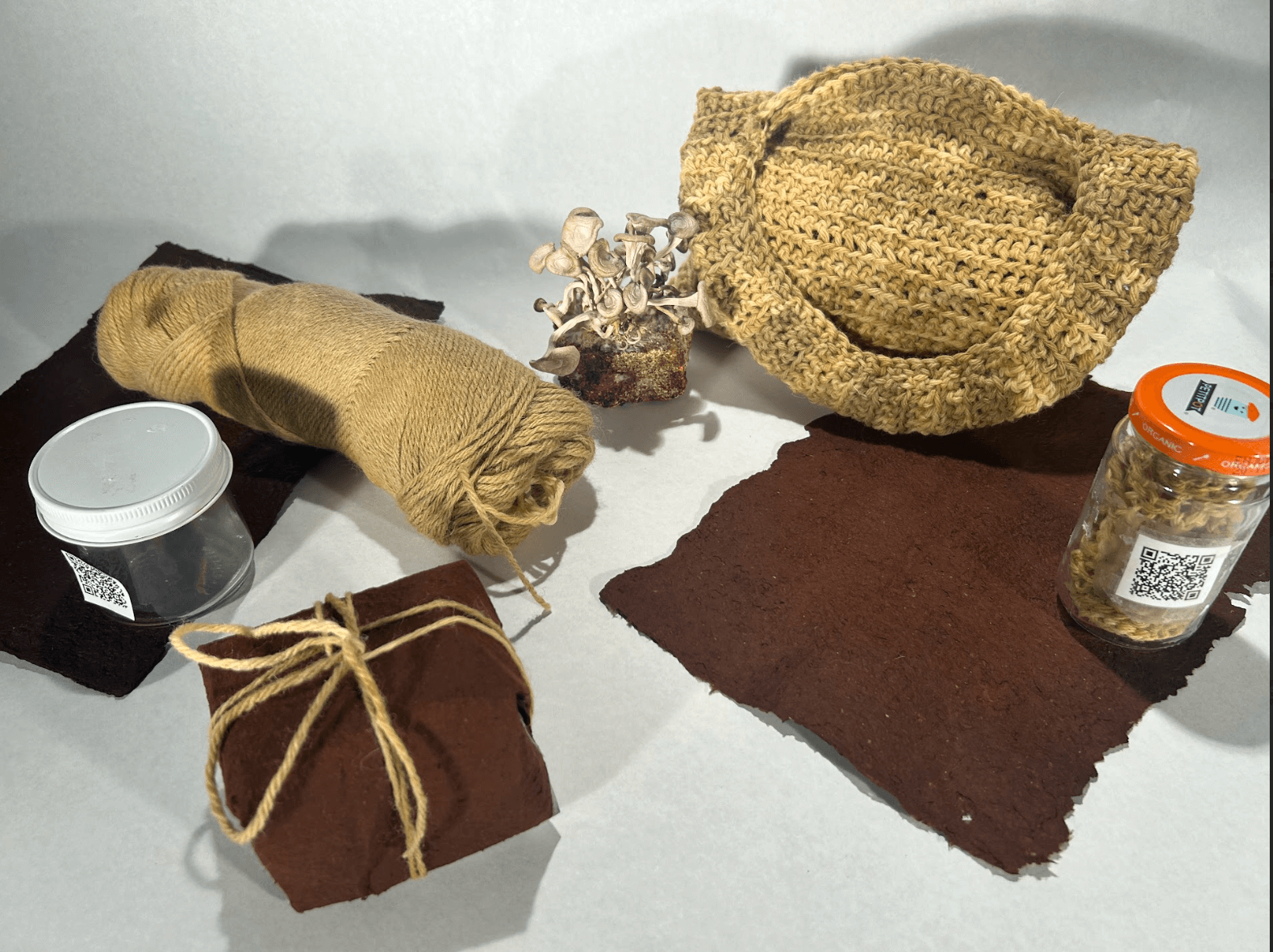 Dyeing Yarn with Mushrooms and Mushroom Paper by Keela B. ('24) and Lulya A. ('24)
Dyeing Yarn with Mushrooms and Mushroom Paper by Keela B. ('24) and Lulya A. ('24)
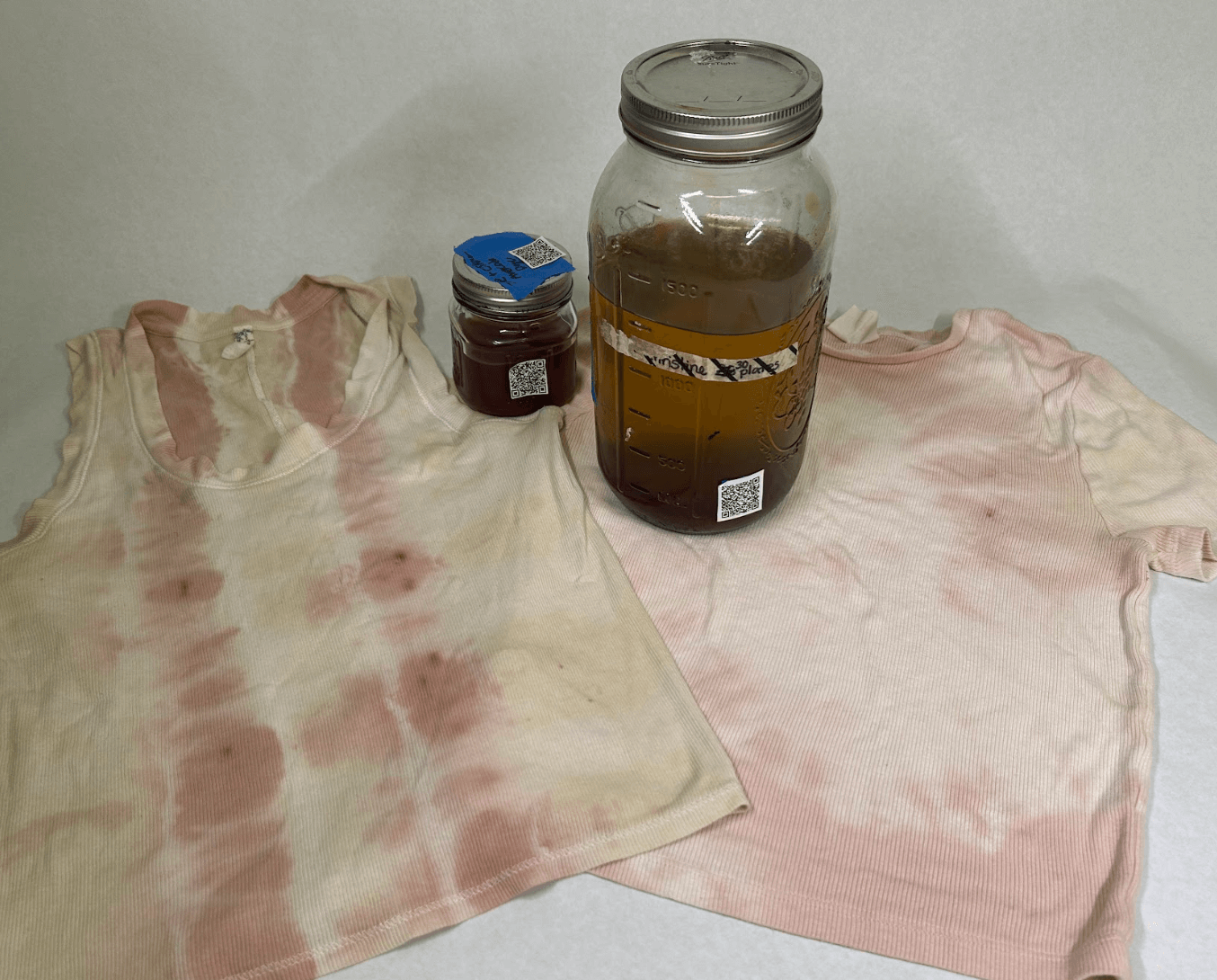 Sustainable Clothing with Plant Dye by Zoe Z. ('25) and Oskar M. ('25)
Sustainable Clothing with Plant Dye by Zoe Z. ('25) and Oskar M. ('25)
Biomaterials¶
Biomaterials: Bioleather

Examples of student projects:
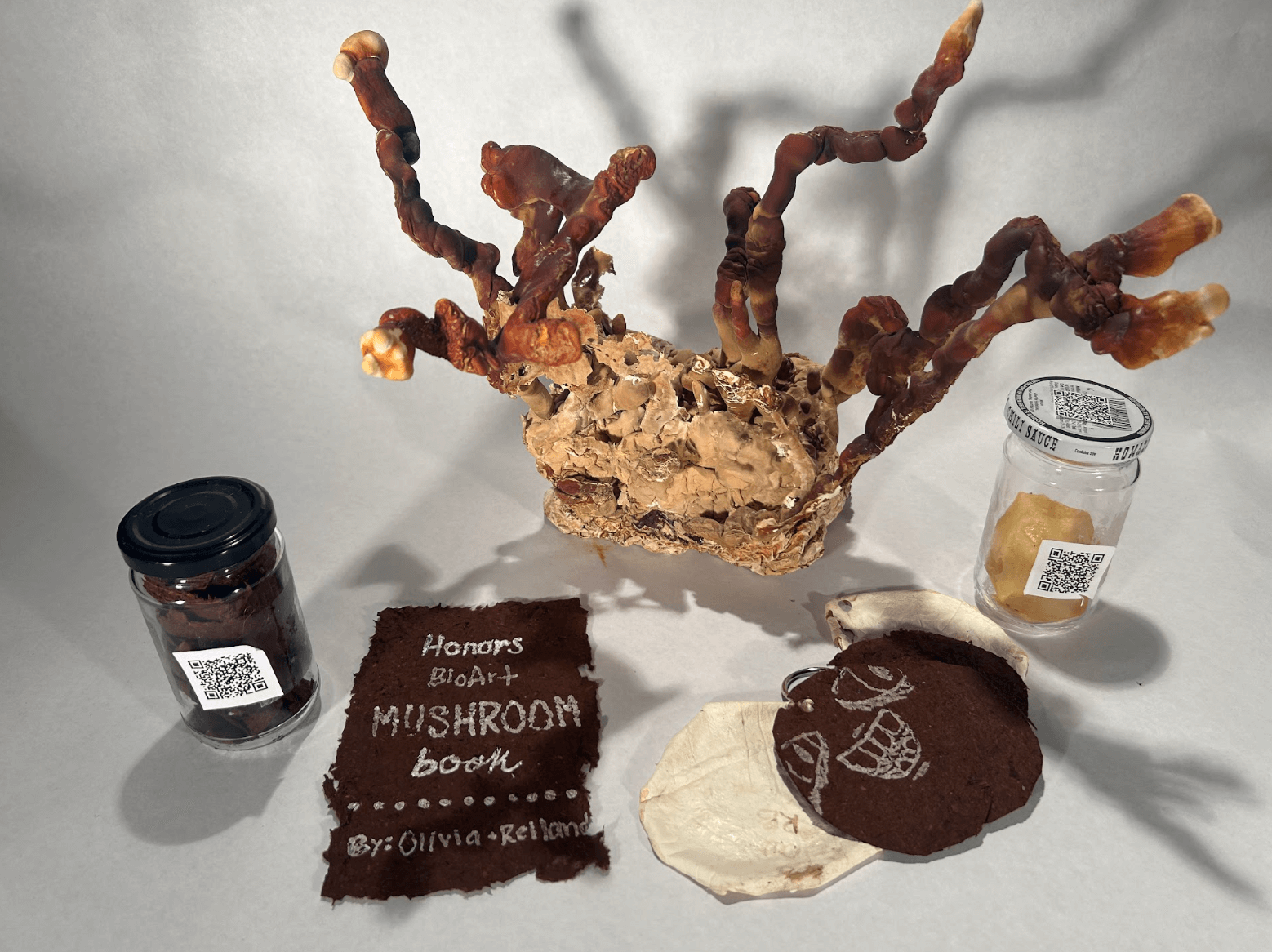 Mycelium Leather and Mushroom Paper by Reiland B. ('24) and Olivia D. ('24)
Mycelium Leather and Mushroom Paper by Reiland B. ('24) and Olivia D. ('24)
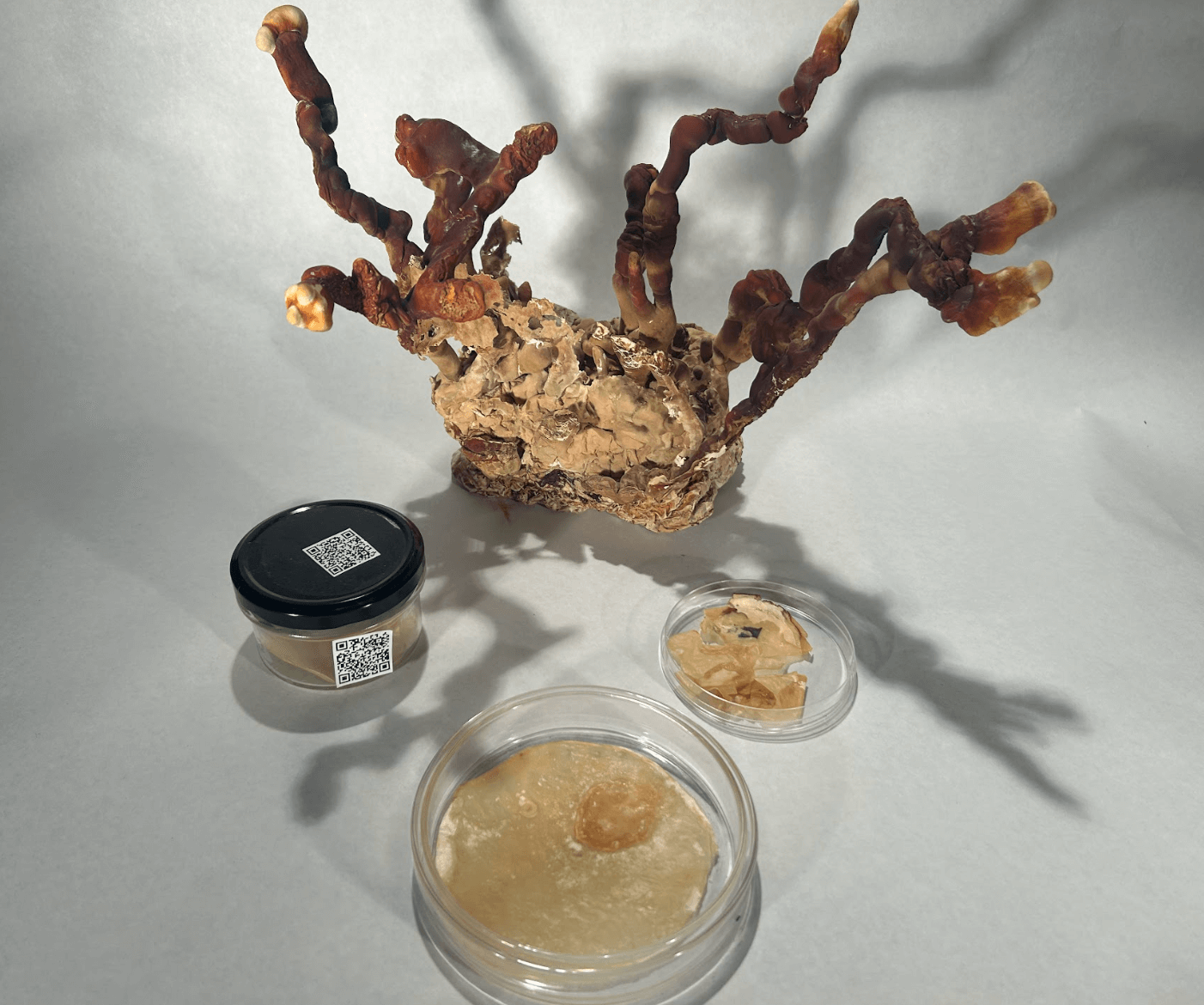 Hide the Hide, Instead have Fungi by Your Side by Annabel S. ('25) and technician Jordan P. ('24)
Hide the Hide, Instead have Fungi by Your Side by Annabel S. ('25) and technician Jordan P. ('24)
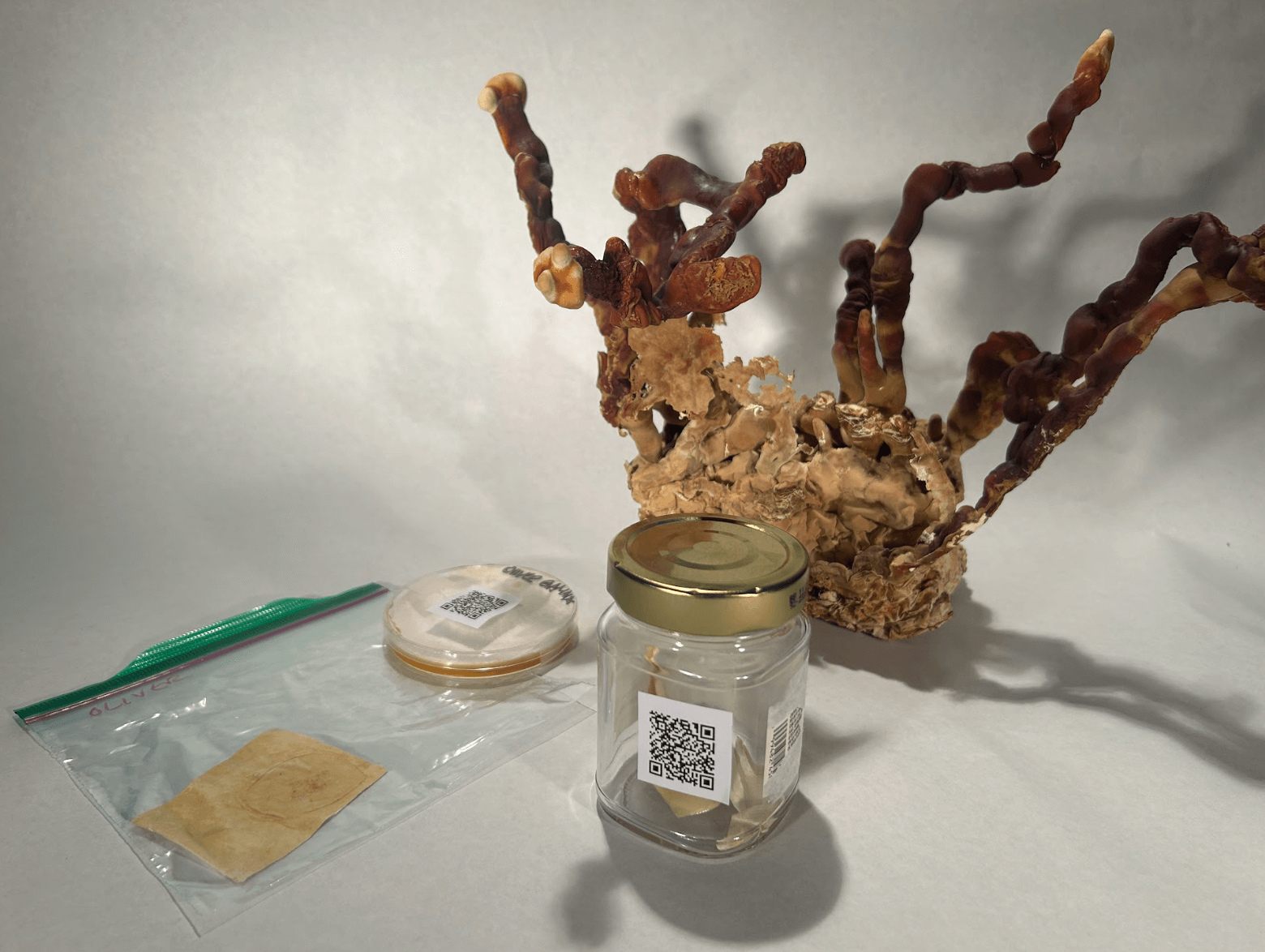 Mycelium Leather by Oliver O. ('25) and technician Jack S. ('25)
Mycelium Leather by Oliver O. ('25) and technician Jack S. ('25)
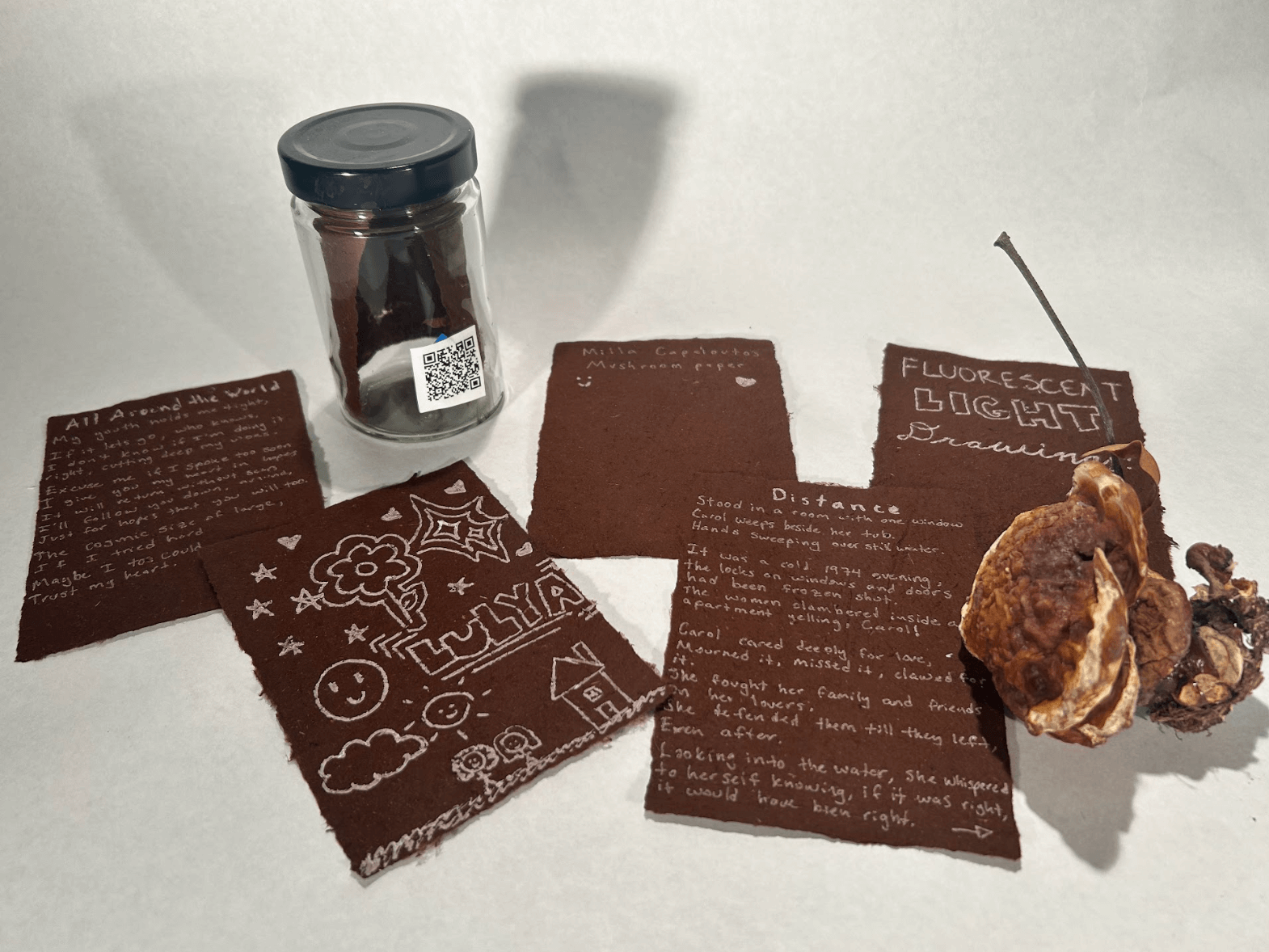 Fungal Paper by Milla C. ('24)
Fungal Paper by Milla C. ('24)
Biomaterials: Biocomposites

Examples of student projects:
 Mycelium Hat by Zyan A. ('24) and Jake L. ('24)
Mycelium Hat by Zyan A. ('24) and Jake L. ('24)
 Silkworm Art by Jeremy R. ('25) and technician Sydney G. ('25)
Silkworm Art by Jeremy R. ('25) and technician Sydney G. ('25)
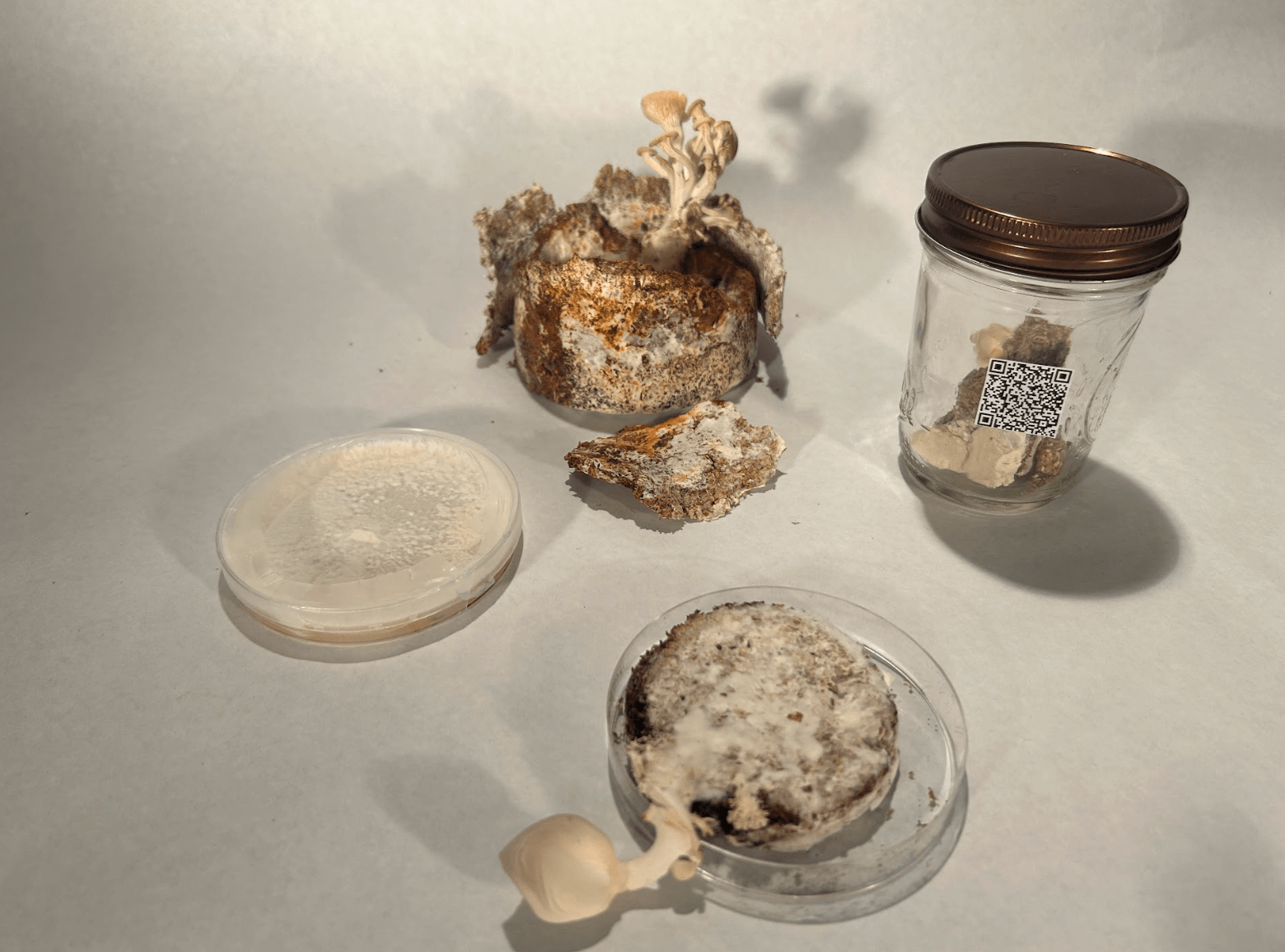 Mycelium Sculpture by Cole B. ('25)
Mycelium Sculpture by Cole B. ('25)
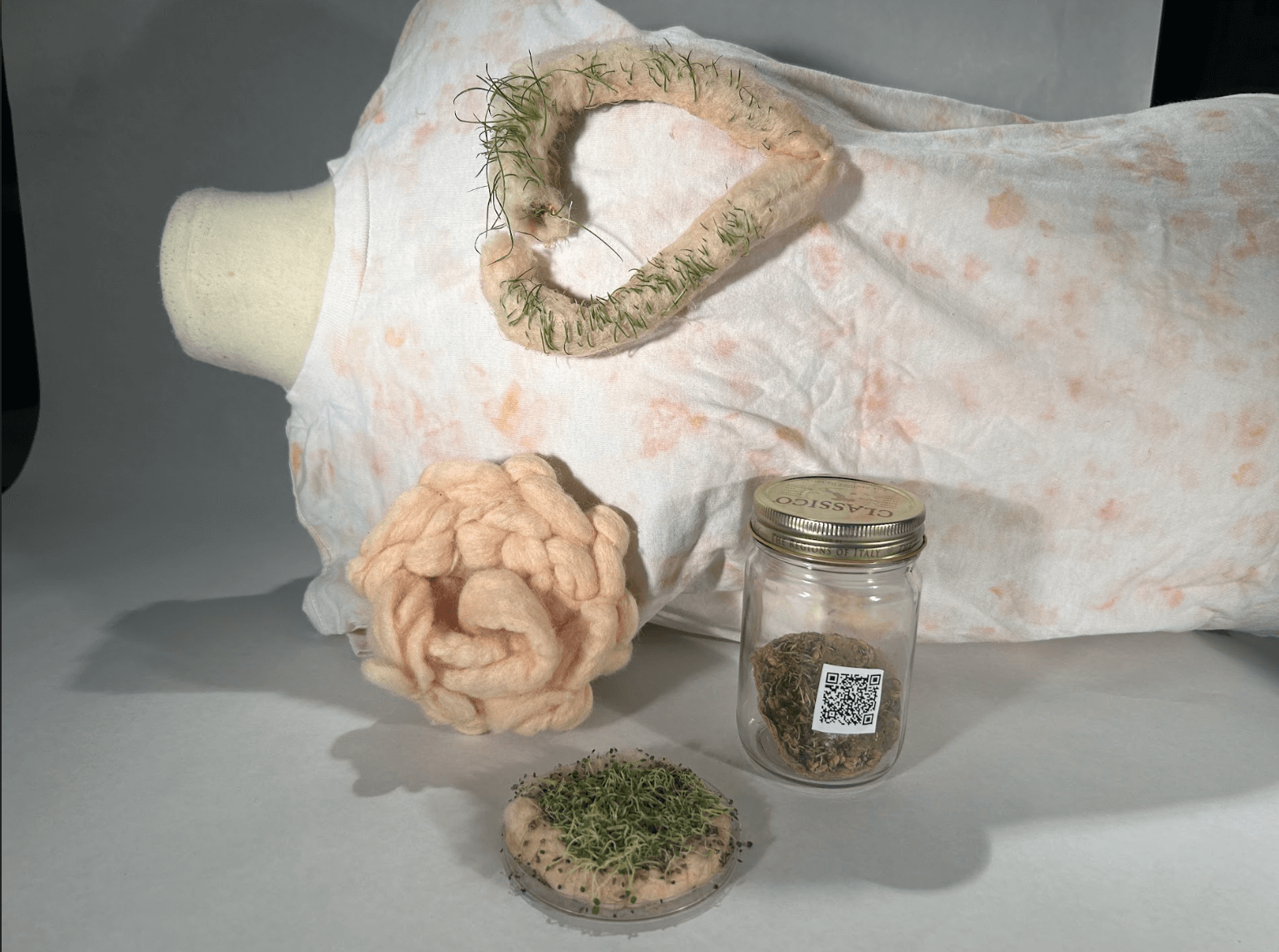 Plant Textiles: Cultivating Couture by Canada C. ('24) and Steven C. T. ('24)
Plant Textiles: Cultivating Couture by Canada C. ('24) and Steven C. T. ('24)
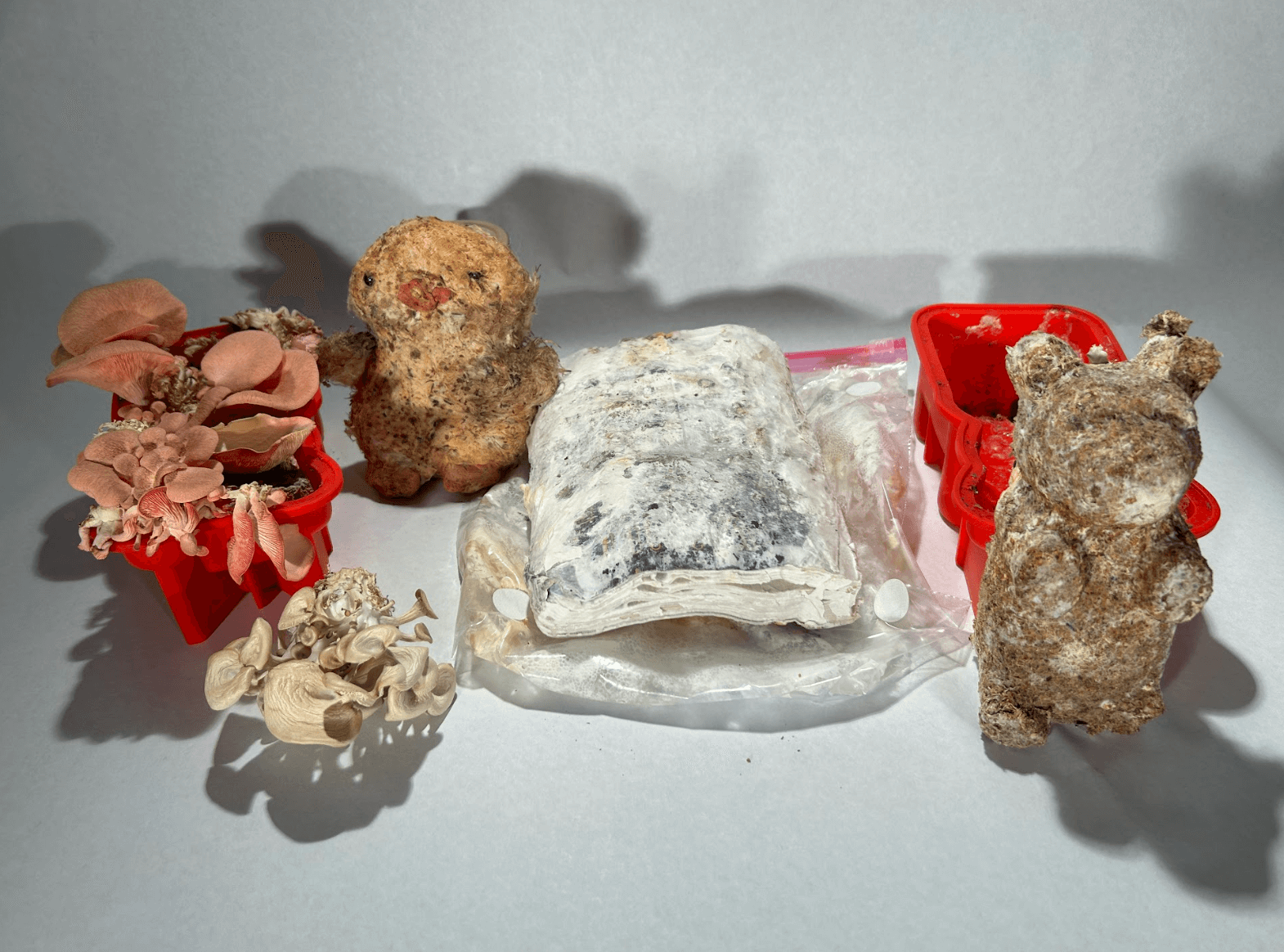 Cultivating Mushrooms in Unconventional Environments by Ozzie L. ('24) and Cash M. ('24)
Cultivating Mushrooms in Unconventional Environments by Ozzie L. ('24) and Cash M. ('24)
Biomaterials: Bioplastics
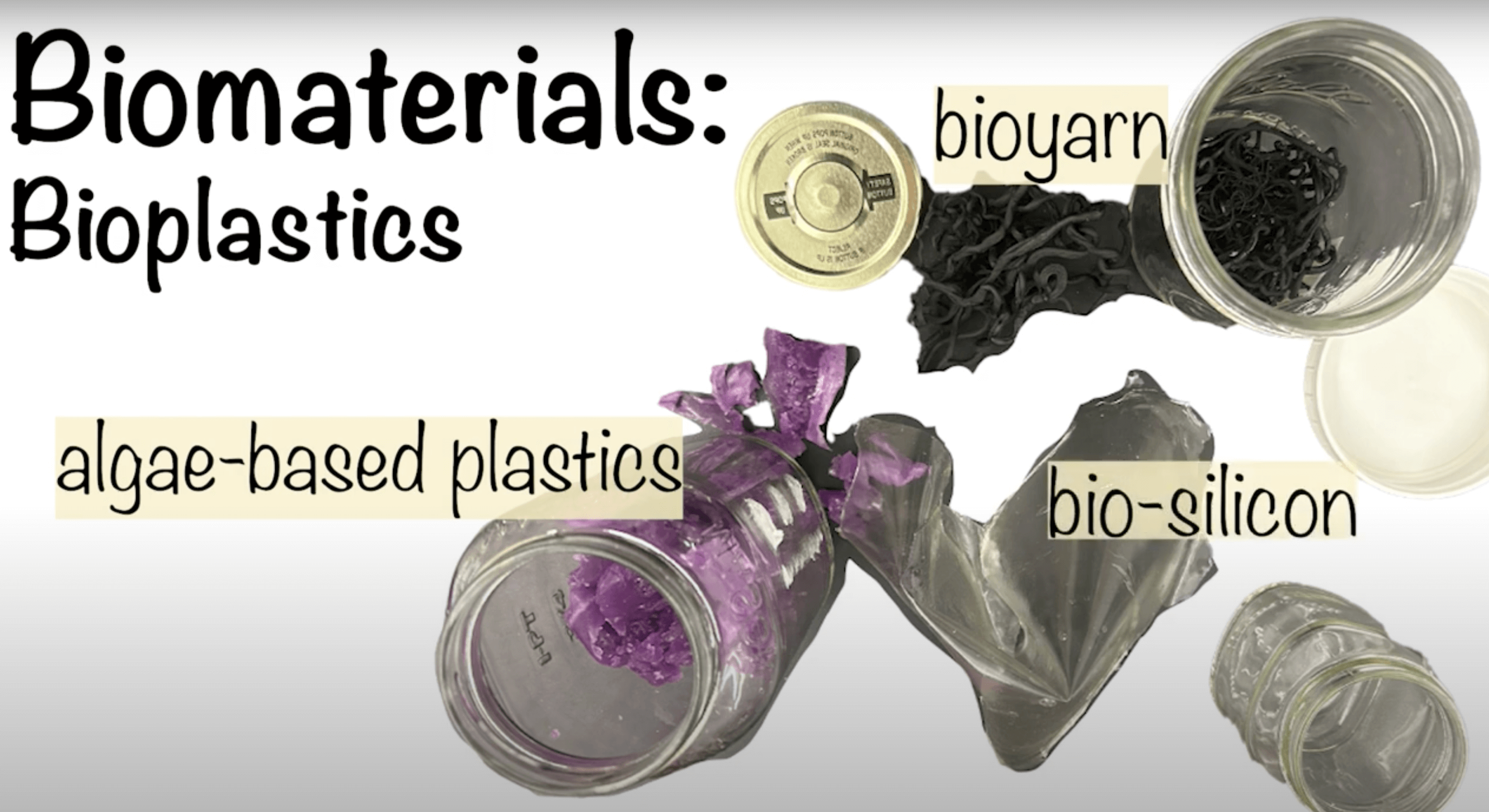
Examples of student projects:
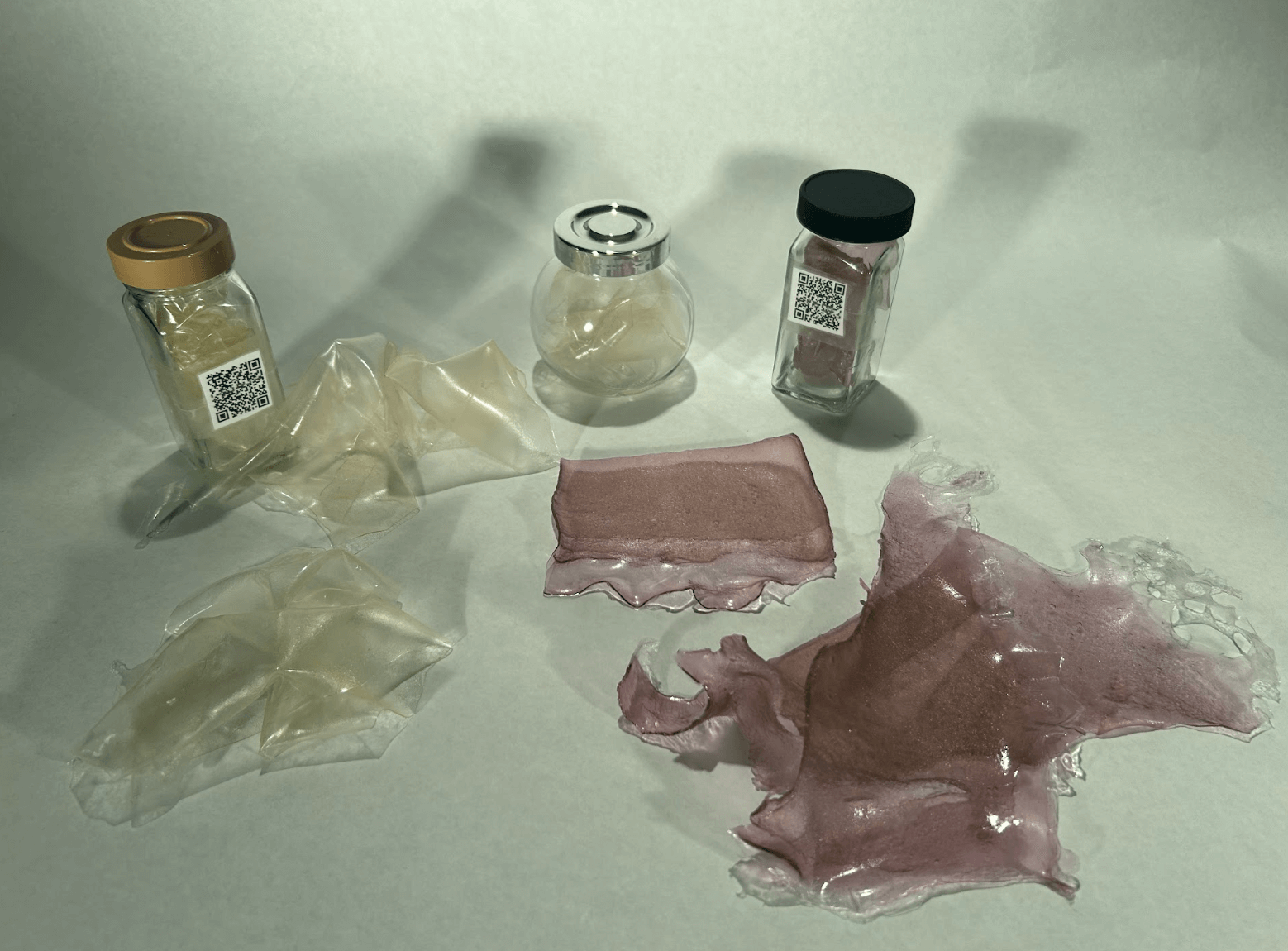 BioPack! by MK P. ('24) and technician Sam S. ('24)
BioPack! by MK P. ('24) and technician Sam S. ('24)
 Bio Box by Wiley M. ('25)
Bio Box by Wiley M. ('25)
 Bioyarn by Carys A. ('24) and technician Wing S. ('25)
Bioyarn by Carys A. ('24) and technician Wing S. ('25)
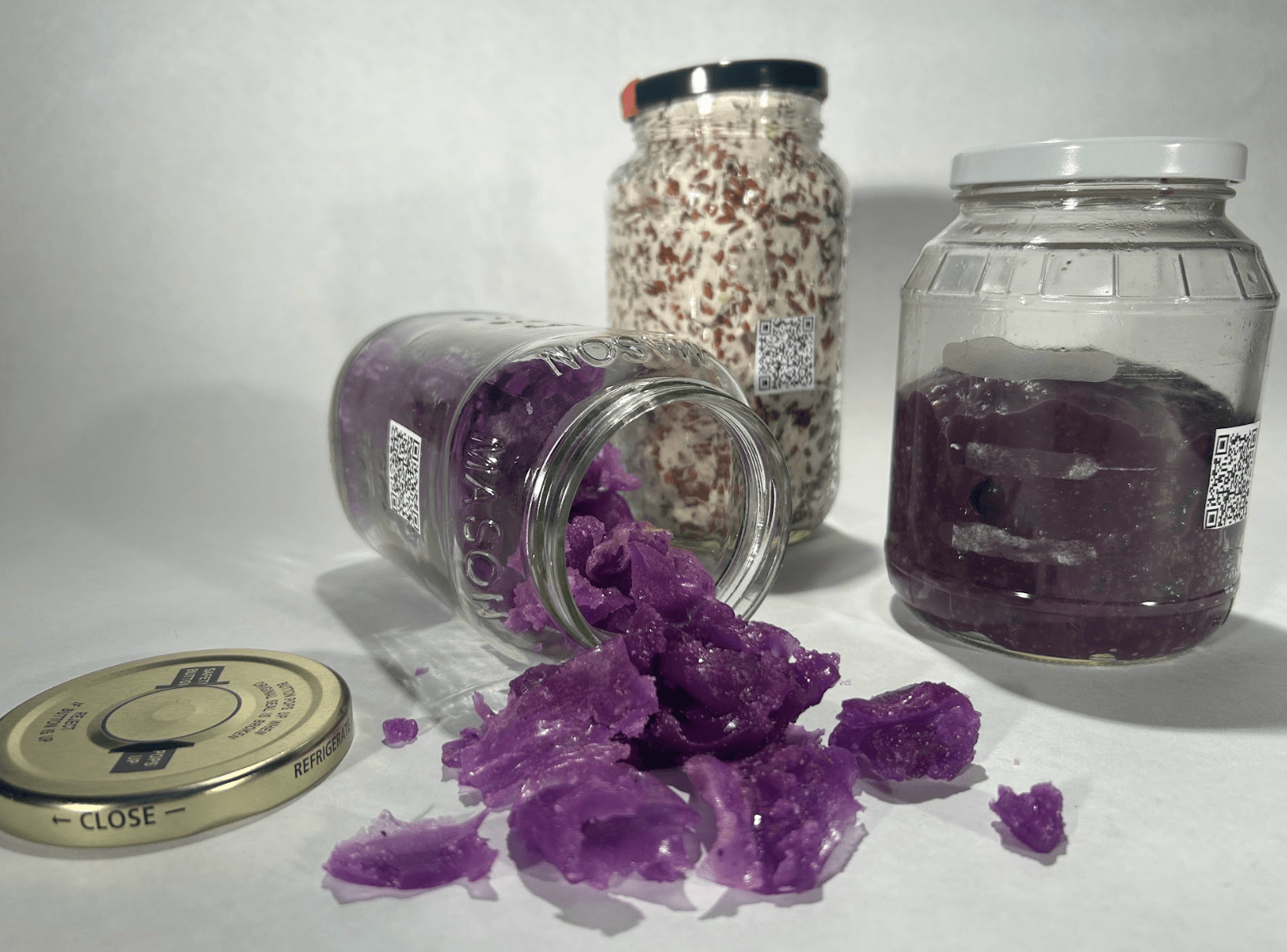 Algae Slime by Mia R. ('24), Luna S. ('24), Chloe C. ('24), and Jordan S. ('25)
Algae Slime by Mia R. ('24), Luna S. ('24), Chloe C. ('24), and Jordan S. ('25)
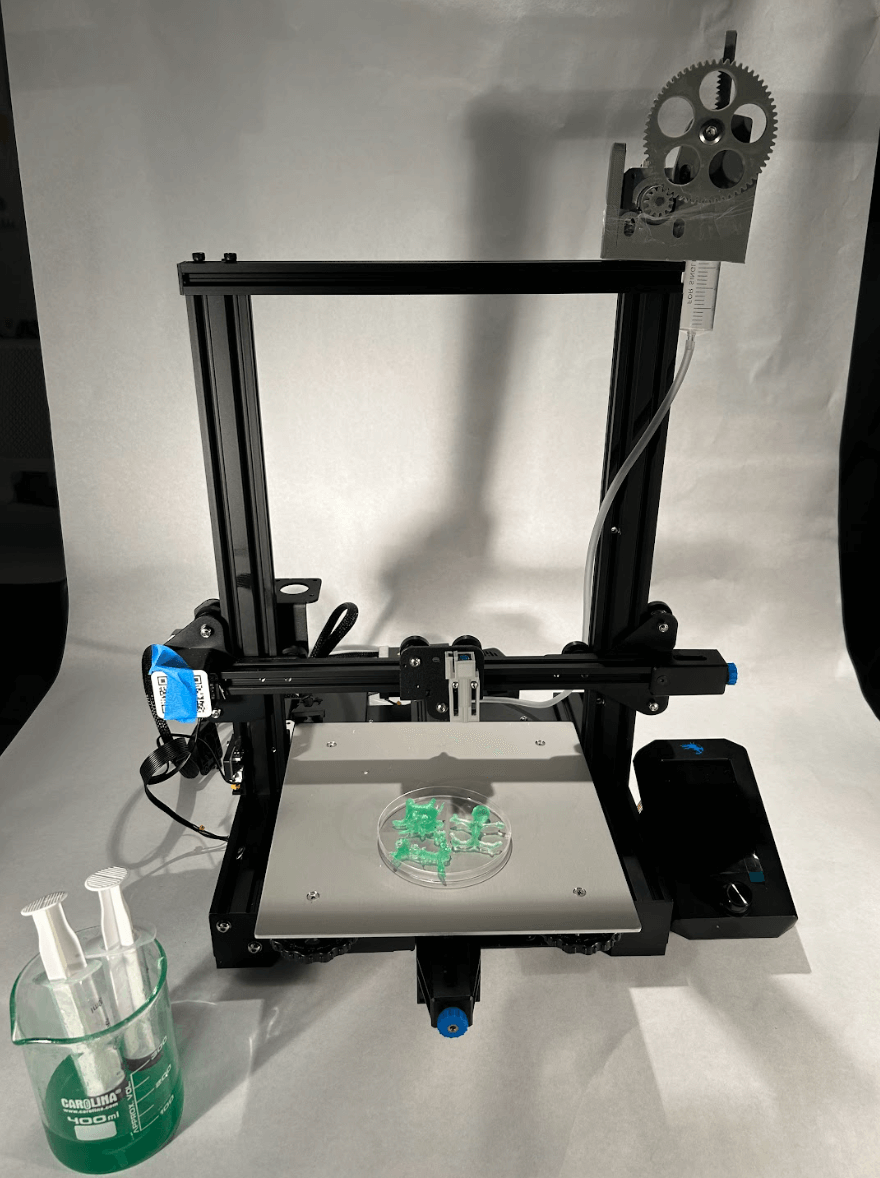 Bioprinter by Ezri A. ('25) and Rowan F. ('25)
Bioprinter by Ezri A. ('25) and Rowan F. ('25)
Bioelectronics¶
The Bioelectronics category is still a work in progress. I will be integrating this category into my Neuroscience class next year. Bioelectronics will consist of organism-interfacing electronic devices and electronics that mimic neural systems.
Living BioLibrary: Physical Library¶
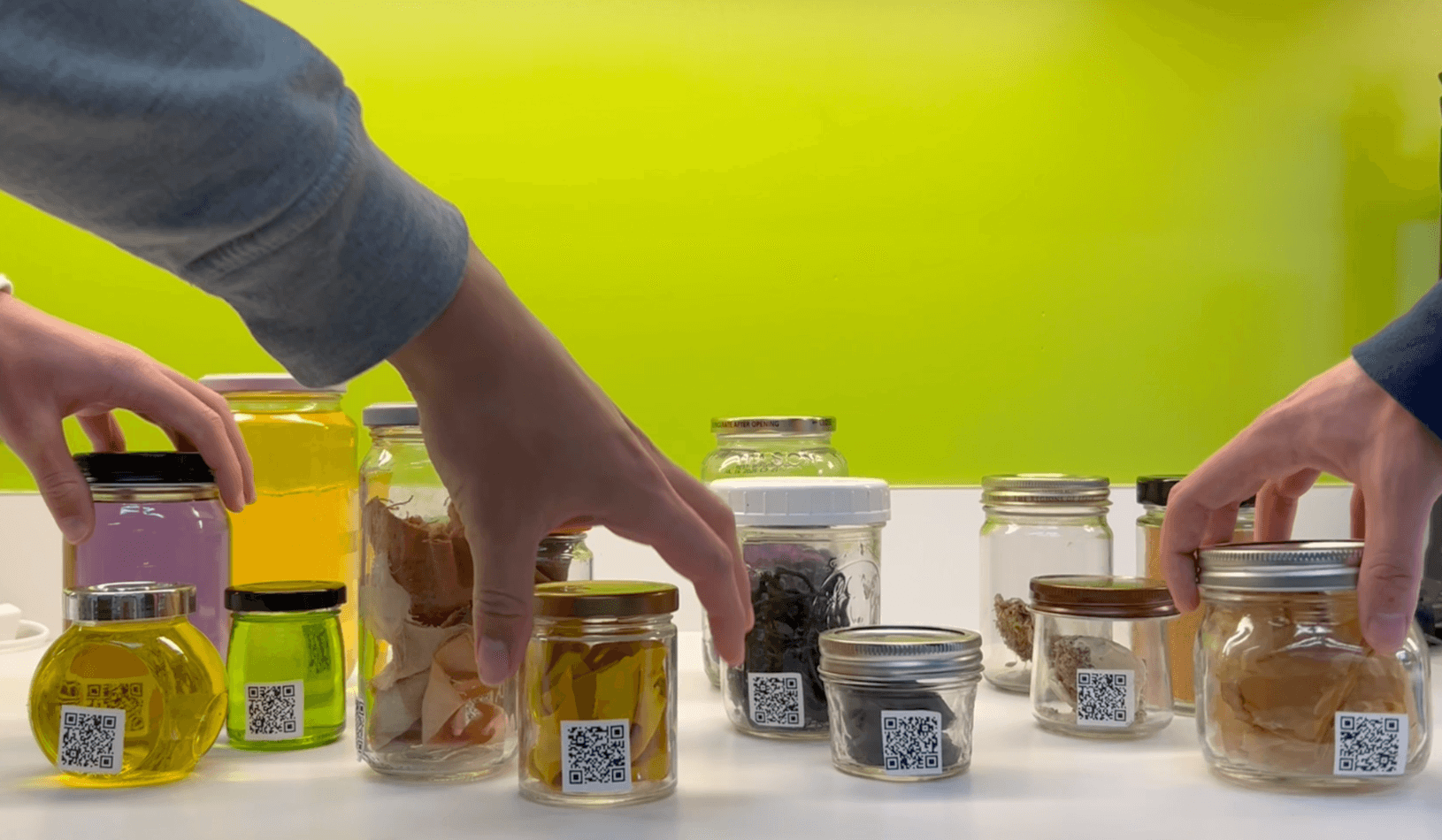
From Digital to Physical
Students prepare for their experimentation through research from past student work on the digital library hub. Students are encouraged to innovate their own methodologies based on existing library materials and procedures.

Students then perform experiments in the lab and work towards creating their final bioart product. During this process, they also make samples of the materials or dyes they have developed. Students add these samples of their innovations into the physical library.
Physical Documentation
The library is broken down into three main categories: biomaterials, biochromes, and bioelectronics. Jars are organized in these categories for storage and ease of use. Students place QR codes on the jars that link to their website describing the process for creating the material that resides in the jar.
The jars are kept in the classroom and maintained by student interns.
Living BioLibrary: Digital Library¶
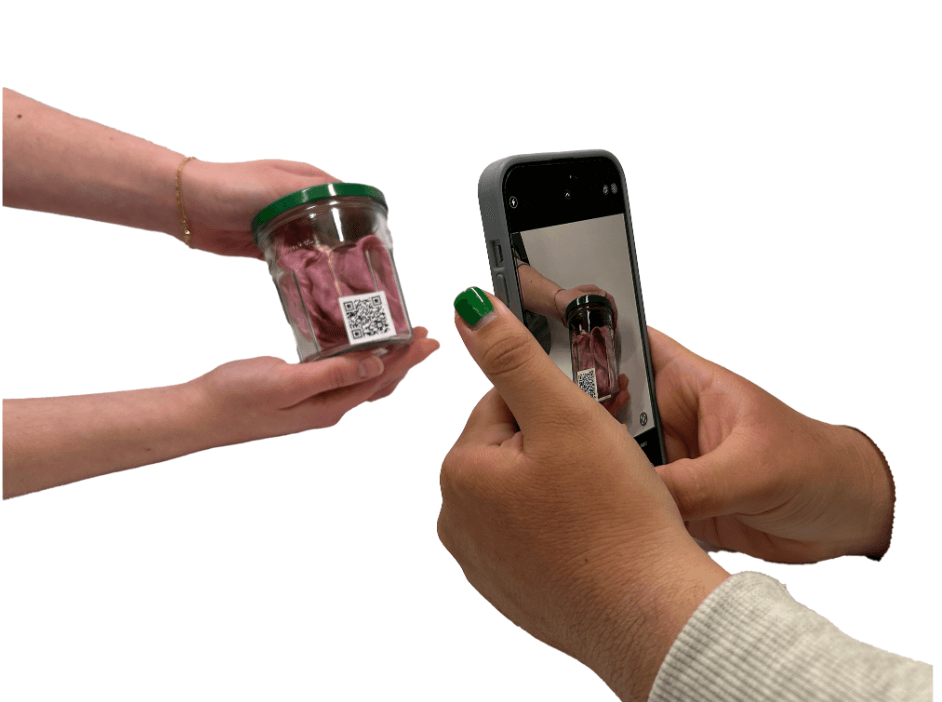
From Physical to Digital
The first step is for students to choose their topic of interest. This is facilitated by the nature of the interactive physical library of materials placed in jars. Students can bring jars back to their workspace to investigate during the ideation phase. QR codes on containers lead to a digital library where students can browse information on their chosen material or dye.
Digital Documentation
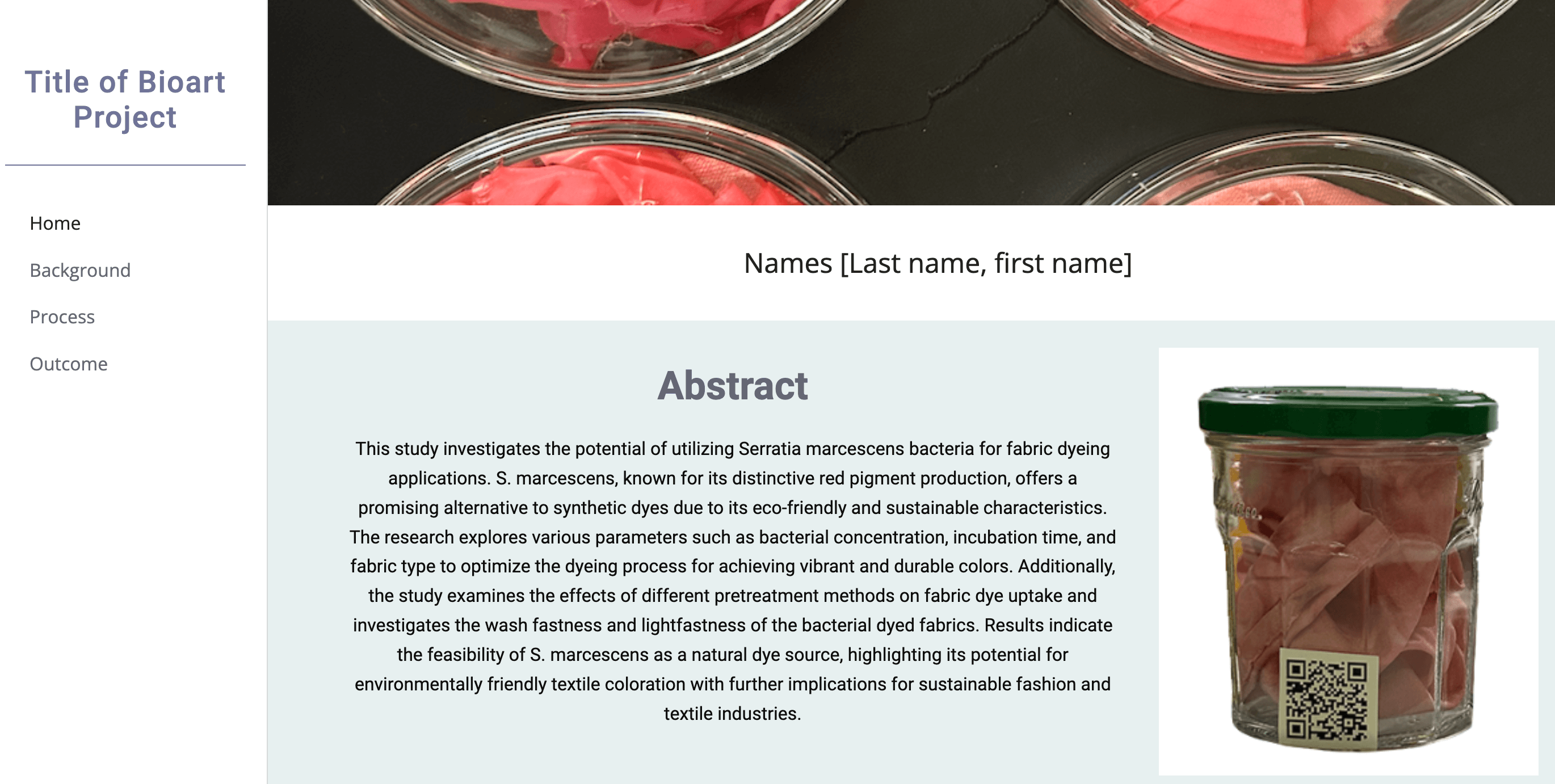
After experimentation, students add their own innovative research, trial and errors, and procedures to the digital collection. Students work off a template website to document their bioart project. As the Living BioLibrary progresses, I will create a site to house each student website.
The link to the student website template is found here.
After documentation, students add a QR code linking to their website on their own jars that are then added into the Living BioLibrary. And the cycle continues.
Bill of Materials¶
| Bill of Materials |
|---|
| Material |
| ------------------------------- |
| Jars |
| Materials for Bioart Projects |
Student Testamonials¶
